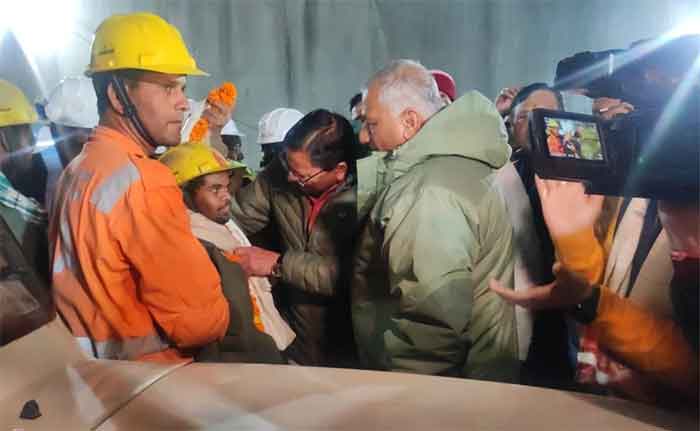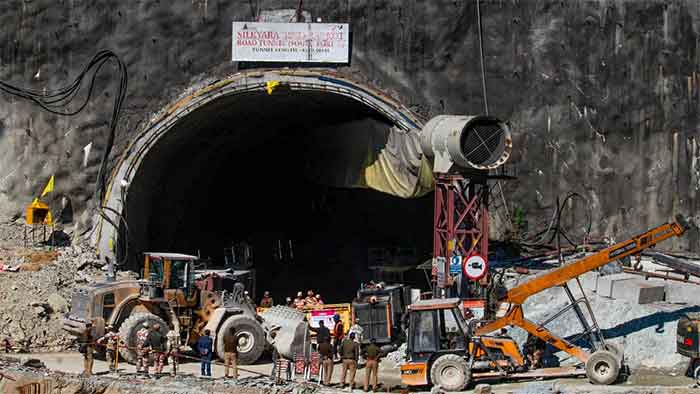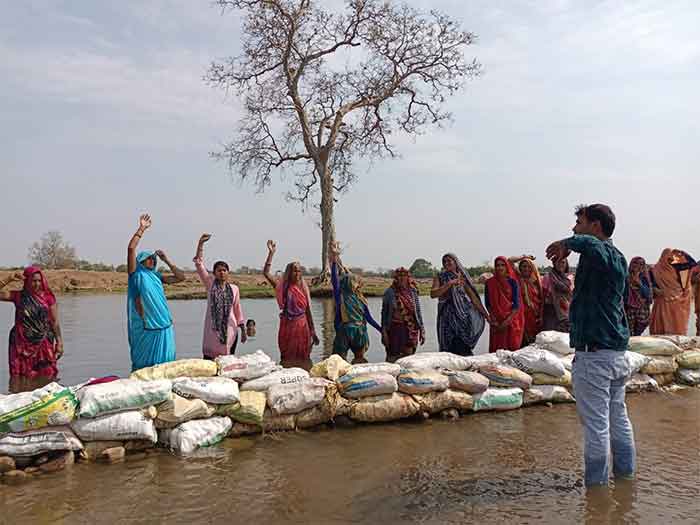
The nation heaved a big sigh of relief when the 41 workers trapped in the under-construction Silkyara-Barkot tunnel (Uttarkashi district of Uttarakhand) were finally rescued on November 28 after a 17-day rescue effort. All those involved in the rescue effort deserve a big thanks of the entire country. The government deserves appreciation for providing all-round support.
Now the next step is to ask whether the authorities will learn the due lessons from this very serious mishap, lessons which actually should have been learnt from earlier accidents and disasters.
As several concerned persons including this writer have been persistently arguing for a long time, the big expansion of the seemingly endless work relating to widening of highways and construction of tunnels, which has involved felling several hundred thousand trees in the fragile, unstable, geologically very young Himalayas with fractured rocks as well as blasting and drilling on a massive scale, has been a serious mistake as this is a case of high-risk over-construction and haphazard construction without the due, much-needed caution and restraint. In the process of speeding up work, essential precautions have been ignored and the emphasis has been more on earning big profits and commissions. As a result of this, landslides have become much more frequent and in addition these have become more destructive as big boulders have been tumbling over the highways posing grave risks. This is a reality that can be seen even on highways, but if one ventures into the roadside villages, like this writer did recently, then the reality that emerges of villages and the people living there being harmed is even grimmer.
This serious mistake has been compounded by the sneaky tendency to avoid proper environment appraisals, or to ‘manage’ them. Trying to be very clever in the wrong sense, in the case of the Char Dham Highway Project, for example, the authorities divided the project into several stretches so that the environment impact assessment could be avoided. Had this been conducted properly, a disaster management plan highlighting several essential precautions would also have emerged and possibility of Silkyara type disasters would have reduced substantially.
In the context of this disaster a statement of a prominent expert is worth noting. PC Nawani, former Director of Geological Survey of India, stated, “As a norm, escape routes should be there in such long tunnel projects to facilitate rescue work in case of an emergency.” (The Times of India, Chandigarh edition, November 19).
More specifically in the context of this project he said, “In the case of the 4.5 km. long Silkyara tunnel, extra support through available instruments should have been provided on the identified soft/ loose part of the mountain.”
Pointing to a more common flaw of such constructions, he stated, “Companies and agencies involved in tunnel construction in India tend to overlook safety concerns and measures suggested by geologists.” ( Report by Gaurav Talwar and Abhyudaya Kotnala).
In another article on this issue published in the Hindustan Times (November 24), two other experts Raghav Chandra (a former Chairman of the National Highway Authority of India) ad BS Singla, (a former chief general manager of NHAI) have written, “ The Himalayas are young mountains and tunnelling here is particularly prone to experience squeezing rock conditions, the inrush of water, roof falls or chimney formations, and gas explosions…Highways and in particular tunnels in the Himalayan region need the highest level of attention to detail and cannot be left to the contractor’s whims.”
Contrast these calls for a lot of caution with the cavalier attitude of a central minister who recently boasted about the huge scale of the tunnel projects in the Himalayan region and who has been very keen about sanctioning more, bigger, wider highways in the Himalayan region regardless of the accumulating evidence of the various disasters associated with them. The Chief Minister of a Himalayan state recently stated that the highway widening in the region has led to disasters because adequate tunnels were not built and he advocated reconstruction of an important highway by providing more tunnels on it!
However several environmentalists and public-spirited citizens have been drawing attention to the growing risks of over-construction and rushed haphazard construction in this region, and as a result even in the case of the Char Dham highway project there was a lot of legal activity at high levels to avoid the risks. At one stage it appeared that those voicing caution and restraint would prevail, but the authorities finally used the argument of the defense forces needing much wider highways to prevail. But now it can be asked after seeing all the disasters and mishaps caused by the excessive widening and over-construction work—is the more frequent disruption of traffic and blocking of roads caused by more frequent and bigger landslides going to be helpful or harmful for defense forces?
Clearly a time has come to learn the lessons of such mishaps and disasters caused by over-construction, rushed construction and haphazard construction which is driven more by corruption and commissions than by real needs. The local Himalayan people should be consulted, geologists and environmentalists should get as much attention as engineers, all necessary precautions should be observed.
All this brings back to me memories of the late 1970s and early 1980s when I was covering the Chipko movement and came very close to several of its activists. In those days there used to be a mobilization of people for saving a hundred auctioned trees or even some dozen trees. What is more, big leaders then listened to environment activists. I remember Sunderlal Bahuguna telling me regarding his meetings with the Prime Minister Mrs. Indira Gandhi where his voice was heard with patience and respect. We saw the result soon enough in the form of a ban on felling of green trees over a very wide area of Uttarakhand. Now when a single widening project (which is not even needed) involves felling of ten thousand or more trees, we see hardly any mobilization. So the increasing disasters are also a wake-up call to again start being more protective towards the Himalayas.
The writer is Honorary Convener, Campaign to Save Earth Now. His recent books include Planet in Peril, Protecting Earth for Children and A Day in 2071.















































